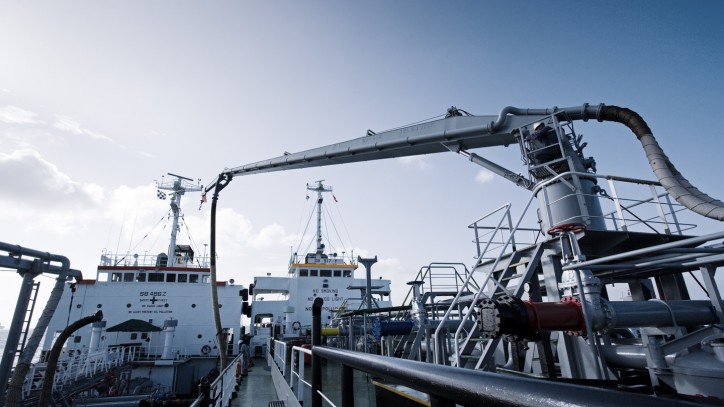Ships taking deliveries of marine fuel oil in Singapore can from 1 January 2017 rely on quantity figures recorded by the bunker barge’s mass flow metering system, reducing the possibility of quantity disputes.
Singapore is one of the top bunkering ports in the world - 45.2 million metric tons of bunker are reported to have been sold in 2015. In an effort to ensure fair and accurate measurements in the delivery of bunker fuels, enhance productivity and mitigate possible corrupt practices, the Maritime Port Authority of Singapore (MPA) will be requiring the use of approved mass flow metering (MFM) systems for all marine fuel oil deliveries in the Port of Singapore from 1 January 2017.

With just over two months to go before its introduction, the MPA is reportedly well on track to meet the MFM implementation date. A Technical Reference for Bunker Mass Flow Metering, TR 48, was launched in February 2016 in support of the new requirements and sets out specific criteria for MFM system integrity, acceptance testing, delivery procedures and the documentation for bunker custody transfer, see MPA’s Port Marine Circular No.4 of 2016. Many bunker tankers have already been approved by the MPA to perform marine fuel oil deliveries in accordance with the new standard and the feedback from the industry is positive. Compared to traditional sounding tape methods, use of MFM technology not only shortens the bunker delivery time but also assists in preventing bunker quantity disputes.
Recommendations
Although the responsibility to install approved MFM systems lies with the bunker barge owners, crews on ships undertaking bunkering in the Port of Singapore should familiarise themselves with the MFM system requirements. Members and clients are advised to revisit their onboard bunkering procedures and checklists well in advance of 1 January 2017 and pay particular attention to the Chief Engineer’s, or his representative’s, duty to:
- verify that the MFM security seals remain intact both before and after the bunkering operation and that the seal numbers match the seal numbers indicated in the latest Seal Verification Report onboard the bunker tanker;
- witness and record both opening and closing MFM readings; the meter reading must be set to zero before the commencement of the bunkering operation;
- check that the printed Bunker Metering Ticket contains the correct information (Name of bunker tanker and craft license number, MFM unique identification number, date and time of the bunker operation start and end, print time and mass in air); and
- ensure that the printed Bunker Metering Ticket is duly signed by both parties and attached to the BDN.
Using a bunker surveyor is still important as the role of the surveyor as an independent party to witness and ensure compliance during bunkering processes remains unchanged. However, the role of bunker surveyors for MFM deliveries will change. For example, the surveyor will be required to cross check the seal verification report and the actual physical seals at various locations in the MFM system.
Source: Gard